Dandelion
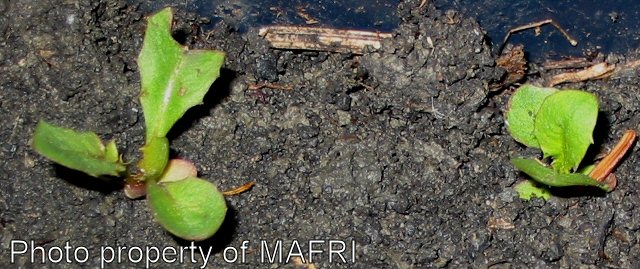 click to enlarge |
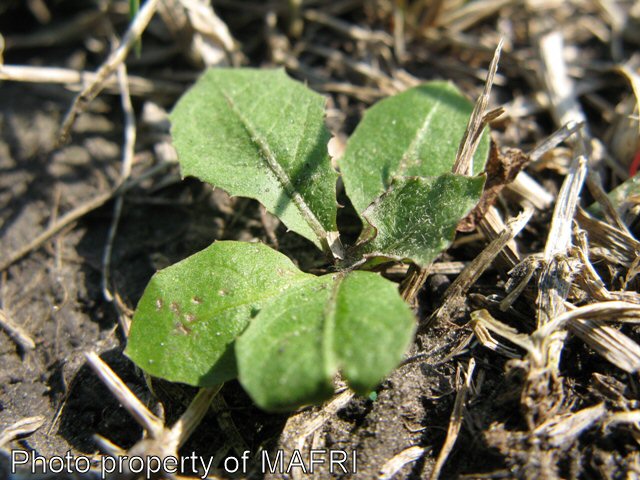 |
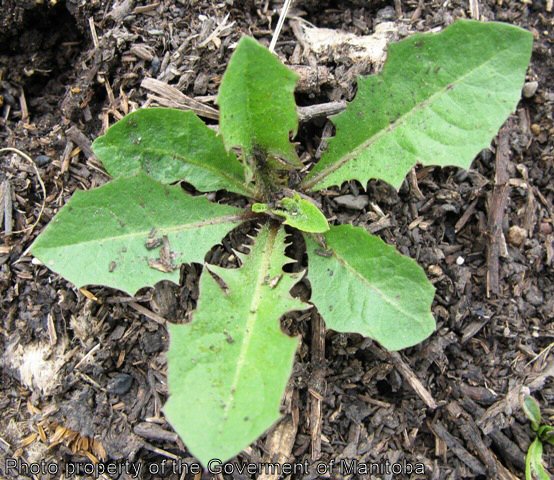 |
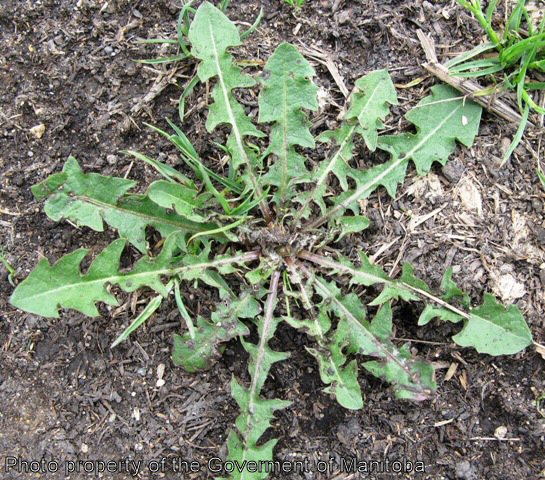 |
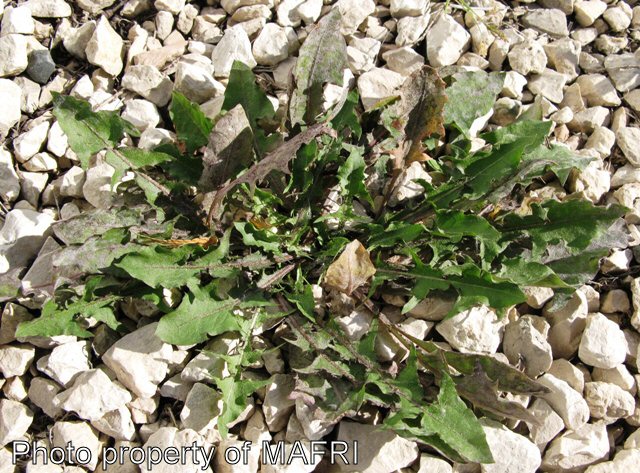 |
 |
 |
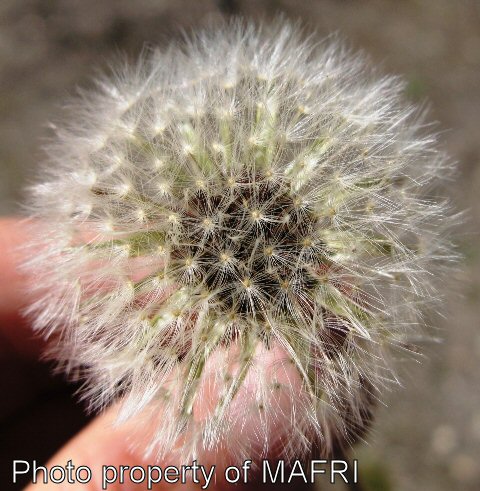 |
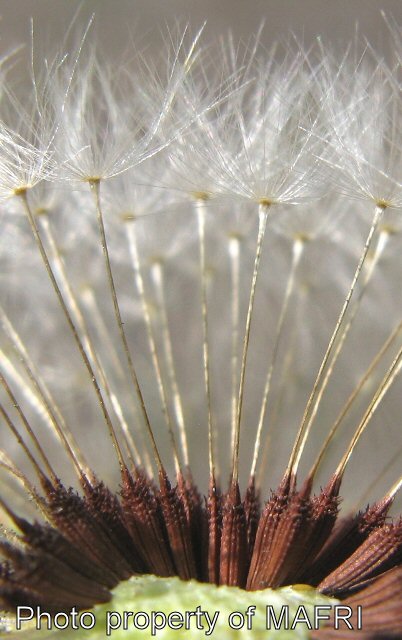 |
 |
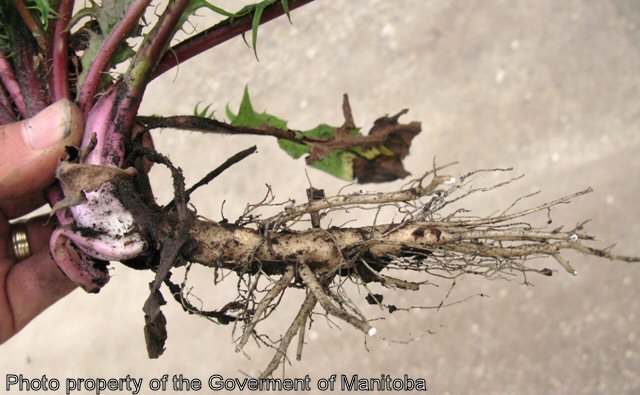 |
Dandelion can be a problem weed in pastures, alfalfa and reduced tillage fields. Established plants and seedlings can severely interfere with the establishment of legumes.
Biology
Dandelions are perennials, reproducing by seed. Almost stemless, they have deep, fleshy tap-roots. The leaves are in a rosette, 7.5-25 cm (3-10 in.) long, variable in shape, and lobed. The flowers are bright yellow and are produced on a hollow, upright stem that is 30-45 cm (11-18 in.) in height. The seeds are 3 mm (1/8 in.) long and attached to a hairy parachute that floats in the wind.
Scouting Techniques
Take a minimum of 20 weed counts across the field. Check field edges as weed seeds often blow in from nearby shelterbelts, turf, and undeveloped areas.
Effects On Crop Quality
Dandelion usually has little effect on forage crop quality.
Threshold/Yield Loss
Established dandelion causes yield losses in annual and winter annual crops and perennial forage seed crops. Dandelions can shorten the productive life of perennial forage seed crops. Productivity in pastures and hay crops is also reduced by dandelions.
Control Tips
Because dandelion has a simple tap-root, tillage can be effective for control. Tillage must be deep enough to cut the root 10 cm (4 in.) below the crown. Heavy-duty cultivators and deep tillers are most successful. Discers are often ineffective in well-established stands.
Dandelion invasion of alfalfa does not cause thinning of established stands. Stands are thinned by other factors such as winter-kill. Thus, it is important to maintain a vigorous stand through proper fertilization, cutting, and other control measures. Dandelion leaves have fairly good forage quality and their presence in the forage, especially when harvested as silage, does not significantly reduce the feeding value of the crop.
Dandelions are often a problem in over-grazed pastures and turf because the weed thrives in conditions of close cropping or mowing. A good fertility program in forages will encourage crop competition that reduces dandelion problems.
Herbicides are available for control of dandelion seedlings in cereal crops. Established dandelions can be controlled with glyphosate applied pre-seeding or post-harvest, but pre-harvest treatments are the most effective. There are no herbicides registered for control in alfalfa. Rotating the field out of forages may be required on these fields.

